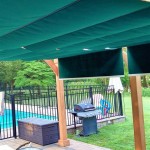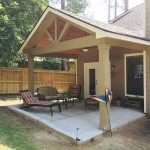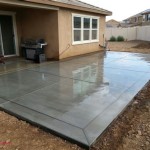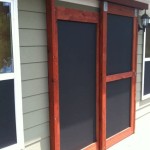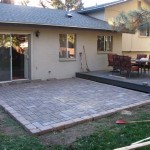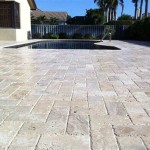Leveling Patio Pavers: The Perfect Finishing Touch
Achieving a flawlessly leveled patio paver surface is crucial for both aesthetic appeal and long-term structural integrity. An uneven patio can lead to tripping hazards, water pooling, and premature deterioration of the pavers and underlying base. This comprehensive guide outlines the necessary tools, equipment, and techniques for successfully leveling patio pavers, ensuring a professional and durable result.
Understanding the Importance of Proper Leveling
The foundation of a durable and attractive patio lies in the correct preparation and leveling of the base layers. While proper installation techniques during the initial paver laying process are important, subsequent settling, frost heaves, or other environmental factors can cause pavers to become uneven over time. Leveling addresses these issues, restoring the patio to its original condition and preventing further damage.
An uneven patio not only looks unappealing but also poses safety risks. Protruding pavers can create tripping hazards, increasing the risk of falls, especially for children and the elderly. Moreover, uneven surfaces can lead to water pooling, which can contribute to algae growth, staining, and accelerated deterioration of the paver material. Proper leveling ensures efficient water runoff, preventing these problems.
Furthermore, an unlevel patio can compromise the structural integrity of the entire installation. Uneven pavers can shift and become unstable, leading to cracks, gaps, and eventual failure of the interlock system. Addressing these issues promptly through leveling prevents more extensive and costly repairs in the future. By maintaining a level surface, the lifespan of the patio can be significantly extended.
Essential Tools and Equipment
Successful patio paver leveling requires a specific set of tools and equipment to ensure accuracy and efficiency. The right tools not only simplify the process but also contribute to a superior finished product. The following is a comprehensive list of essential items:
Leveling Tools: A long, straight edge (at least 6 feet) is essential for identifying high and low spots across the paver surface. A spirit level or laser level, used in conjunction with the straight edge, provides accurate readings to determine the degree of unevenness. A rubber mallet is used to gently tap pavers into place without causing damage. Finally, a paver leveling screed helps create a smooth and consistent base layer for setting or resetting pavers.
Excavation and Base Preparation Tools: A shovel, spade, and garden fork are necessary for removing existing pavers and excavating the underlying base material. A tamper or plate compactor is used to compact the base material, creating a solid and stable foundation. A wheelbarrow is essential for transporting materials, such as sand and gravel, to and from the work area. Safety glasses and work gloves are crucial for protecting the eyes and hands during excavation and material handling.
Material Handling Tools: A paver lifter or pry bar can be used to safely lift and remove pavers without damaging them. A broom or stiff brush is needed to sweep away debris and prepare the surface for compaction. A measuring tape or ruler is used for accurate measurements when adjusting the base layer and paver placement. A trowel is useful for spreading and smoothing the bedding sand layer.
Safety Equipment: Safety glasses are vital to protect eyes from flying debris when using tools like the rubber mallet or when working near materials that may cause dust. Work gloves protect hands from abrasions and cuts during the lifting and handling of pavers and other materials. Knee pads are advisable for prolonged periods of kneeling and working on the ground. A dust mask can be used to avoid inhaling dust particles especially when working with dry materials like sand. Hearing protection may also be needed if operating motorized equipment, such as a plate compactor.
Step-by-Step Guide to Leveling Patio Pavers
Leveling patio pavers involves a systematic approach that includes identifying uneven areas, removing and adjusting pavers, and ensuring proper base preparation. Following these steps will result in a level and stable patio surface:
Inspection and Preparation: Begin by thoroughly inspecting the patio surface to identify areas that are uneven or have sunken pavers. Mark these areas using chalk or spray paint. Remove any debris, weeds, or loose material from the patio surface. Gather all the necessary tools and equipment.
Paver Removal: Using a paver lifter or pry bar, carefully remove the affected pavers. Gently lift each paver to avoid damaging the edges or surrounding pavers. Stack the removed pavers neatly to prevent breakage and ensure easy replacement. Inspect the pavers for cracks or other damage and replace as necessary.
Base Preparation and Adjustment: Once the pavers are removed, examine the underlying base material. If the base is compacted and stable, simply add or remove bedding sand to achieve the desired level. If the base is uneven or unstable, excavate the area to a depth of several inches. Add a layer of gravel and compact it thoroughly using a tamper or plate compactor. Next, add a layer of bedding sand and level it using a paver leveling screed. Ensure the base is properly sloped for water drainage.
Paver Replacement and Leveling: Carefully replace the pavers, ensuring they are aligned with the surrounding pavers. Use a rubber mallet to gently tap each paver into place. Check the level of each paver using a long, straight edge and spirit level. Adjust the bedding sand as needed to achieve a perfectly level surface. Continue this process until all the affected pavers are level and aligned.
Final Touches: Once all the pavers are level, sweep the patio surface to remove any excess sand or debris. Fill the joints between the pavers with polymeric sand, following the manufacturer's instructions. Polymeric sand helps to lock the pavers in place and prevents weed growth. Lightly water the polymeric sand to activate the binding agents. Allow the patio surface to dry completely before using it.
Addressing Common Problems: Sometimes, despite best efforts, some persistent problems may need additional attention. Sunken pavers may need the repair of water damage, which often leads to soil erosion beneath the paver base. Frost heave, common in colder climates, may cause pavers to rise and become uneven. This requires excavating the affected area, adding a layer of insulation, and re-compacting the base. Weed growth between pavers can be controlled with regular maintenance and the use of polymeric sand or herbicides. Regular sweeping and cleaning can also prevent the buildup of debris and dirt, which can contribute to uneven surfaces.

Grading Tools Level For Best Hardscaping Equipment

Essential Tools For Laying Block Pavers The Paving Experts

How To Pave The Ultimate Guide N Paving Centre

Block Paving Tools And Equipment

How To Lay A Patio The Paving Experts

How To Pave The Ultimate Guide N Paving Centre

How To Level The Ground For Pavers 15 Steps With Pictures

Why Everyone Is Switching To Pavers How Lay The Perfect

Grading Tools Level For Best Hardscaping Equipment

What Tools Do You Need To Pave Your Garden Smiths Hire
Related Posts

